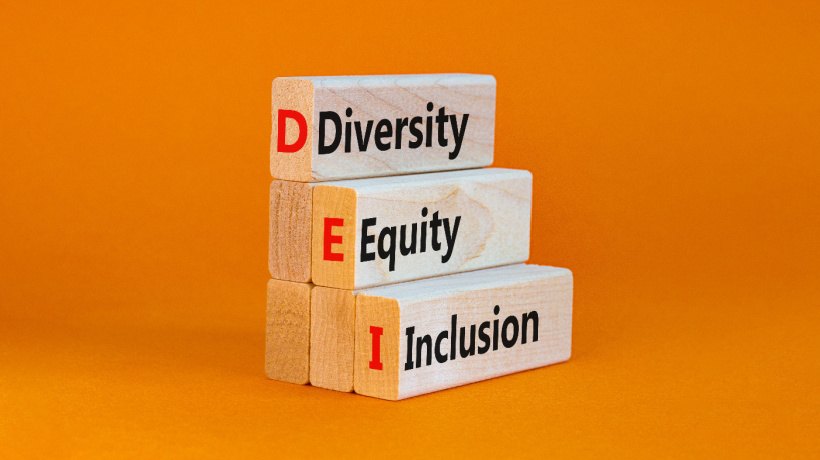DEI In Organizations: Why Implement Such Initiatives?
Imagine an office environment where team members find themselves in a structured routine, like clockwork, with each person following the same anticipated work rhythm. Quite predictable, isn't it? This is where diversity emerges, akin to a toolbox filled with possibilities, scattering a spectrum of ideas with every collaboration. Picture a data analyst crunching numbers beside a graphic designer, both contributing to the dynamic workflow!
However, there are moments when a dominant voice overshadows the nuanced brilliance of others. This is where inclusion takes center stage, playing the role of a skilled project manager, seamlessly integrating every perspective, from the meticulous details of an accountant to the creative solutions of a marketing specialist. Suddenly, the workspace transforms into a harmonious symphony of unique talents.
Here, equity becomes an integral part of the office dynamic, not as a strict supervisor managing exclusive departments, but as an approachable team leader ensuring that everyone has a chance to contribute. No isolated workspaces here! Whether it's the experienced professional's insightful strategies or the tech-savvy employee's digital skills, each contribution receives recognition, creating a collection of solutions as diverse and impactful as the office itself.
So, let go of the rigid routine! Embrace the diversity not only in the office but also in your life, amplify the inclusive team spirit, and allow equity to promote fairness in recognizing everyone's efforts. Remember, the most successful offices aren't about everyone adhering to a uniform approach; instead, they involve everyone feeling valued and ready to contribute their unique skills to enhance the collective workflow.
Top Reasons To Implement DEI In Your Organization
While attracting and retaining diverse talent is a core strength of Diversity, Equity, and Inclusion (DEI), its impact stretches far wider than recruitment metrics. Here are a few key reasons why a robust DEI strategy is critical for organizational success:
1. Improved Decision-Making
Diverse teams bring varied experiences and perspectives to the table, sparking critical thinking and dismantling groupthink. Homogeneous teams are more prone to echo chambers, where everyone agrees without questioning the status quo. Diverse teams bring healthy debate and prevent blind spots, leading to more innovative and effective solutions. This leads to more informed and innovative solutions, propelling the quality of decision-making.
2. Respond To Employee Expectations
Cultivating an inclusive environment where employees feel valued and respected significantly boosts employee satisfaction and engagement. This translates to higher productivity, lower turnover, and a vibrant company culture.
3. Attract And Retain Diverse Talent
The global workforce is becoming increasingly diverse, and organizations that prioritize DEI are better equipped to attract and retain the talent they need to thrive in this changing landscape. By embracing diversity, you future-proof your organization for long-term success.
4. Responding To Customer Expectations
Consumers increasingly expect companies to reflect the diversity they see in the world. By understanding and catering to diverse needs and perspectives, you build stronger relationships and trust with your customers.
5. Market Differentiation And Growth
A strong commitment to DEI demonstrates your organization's values and social responsibility, enhancing your brand image and reputation among investors, partners, and the community.
How To Get Started In Five Stages
Here's a framework to guide your organization's DEI evolution, with key questions to prompt reflection and action:
Stage 1: Awakening (Aware)
- Personal commitment
Why does Diversity, Equity, and Inclusion (DEI) hold individual significance within our organization? What are the compelling drivers for embarking on this journey? - Shared vision
Where do we aspire to be in terms of DEI as an organization? What are our long-term goals and guiding principles?
Stage 2: Transcending Compliance
- Strategic ambition
How can we establish ambitious DEI goals that go beyond mere regulatory compliance, truly impacting our culture and stakeholders?
Stage 3: Deliberate Implementation (Tactical)
- Charting the course
What is our overarching DEI strategy? What core principles will guide our actions and decision-making? - Standardization for impact
Where do we need to establish standardized practices across the organization to ensure consistent application and measurable outcomes?
Stage 4: Embedding Inclusion (Integrated)
- Building systemic foundations
What systems and structures need to be implemented to ensure DEI becomes deeply woven into the fabric of our organization?
Stage 5: Continuous Evolution (Sustainable)
- Unwavering dedication
The DEI journey is an ongoing commitment. How can we continuously assess and refine our strategies to maintain momentum and adapt to evolving needs and contexts?
Conclusion
Remember, this roadmap is not a linear, one-off process. It's a cyclical journey where insights gained later can inform and enrich earlier stages. By engaging in deliberate reflection and action, your organization can progressively move towards a truly inclusive and thriving future.
Navigating the complex terrain of Diversity, Equity, and Inclusion (DEI) requires a tailored approach. While valuable frameworks and tools provide guidance, each organization must articulate its distinct objectives and chart its path to success.

